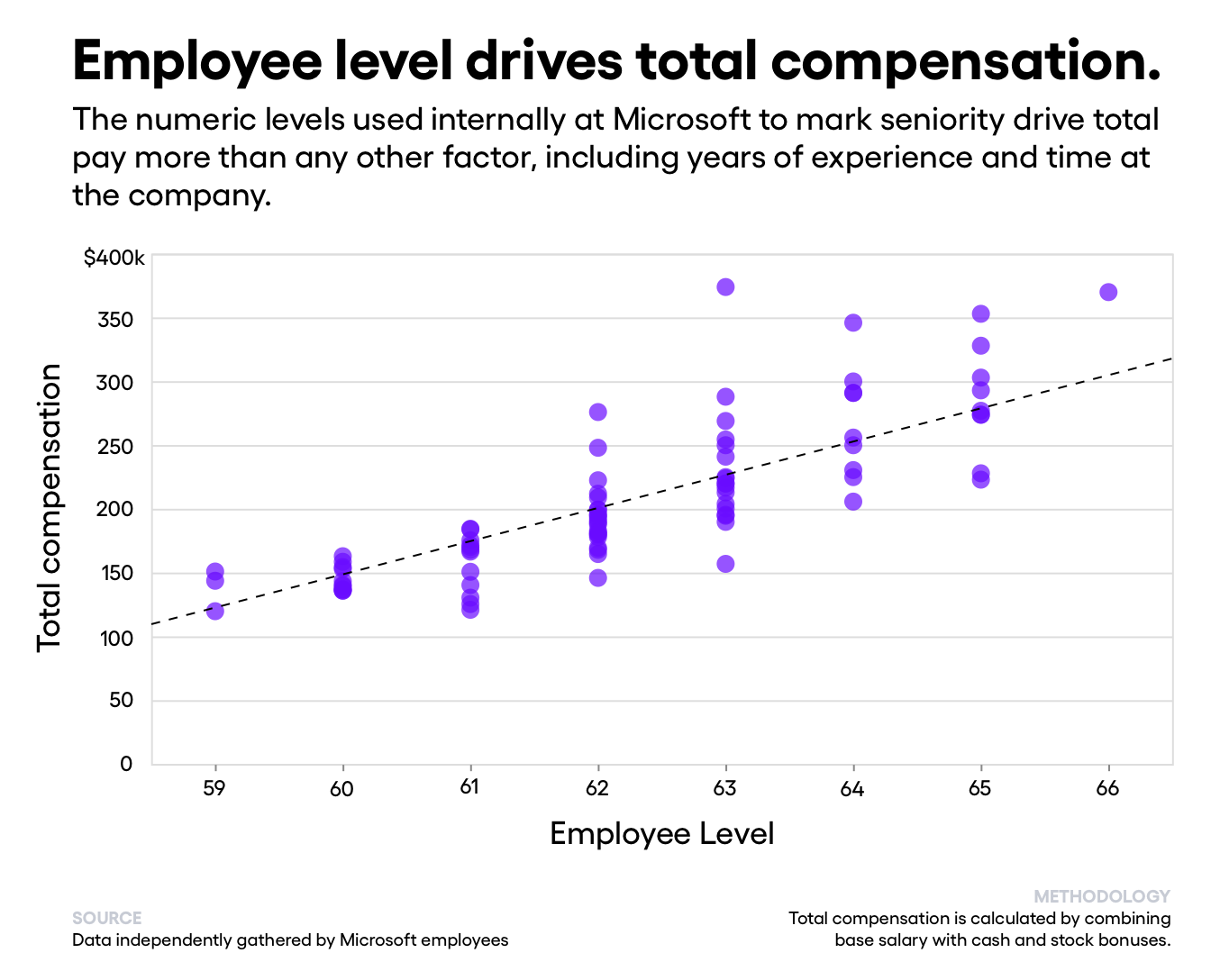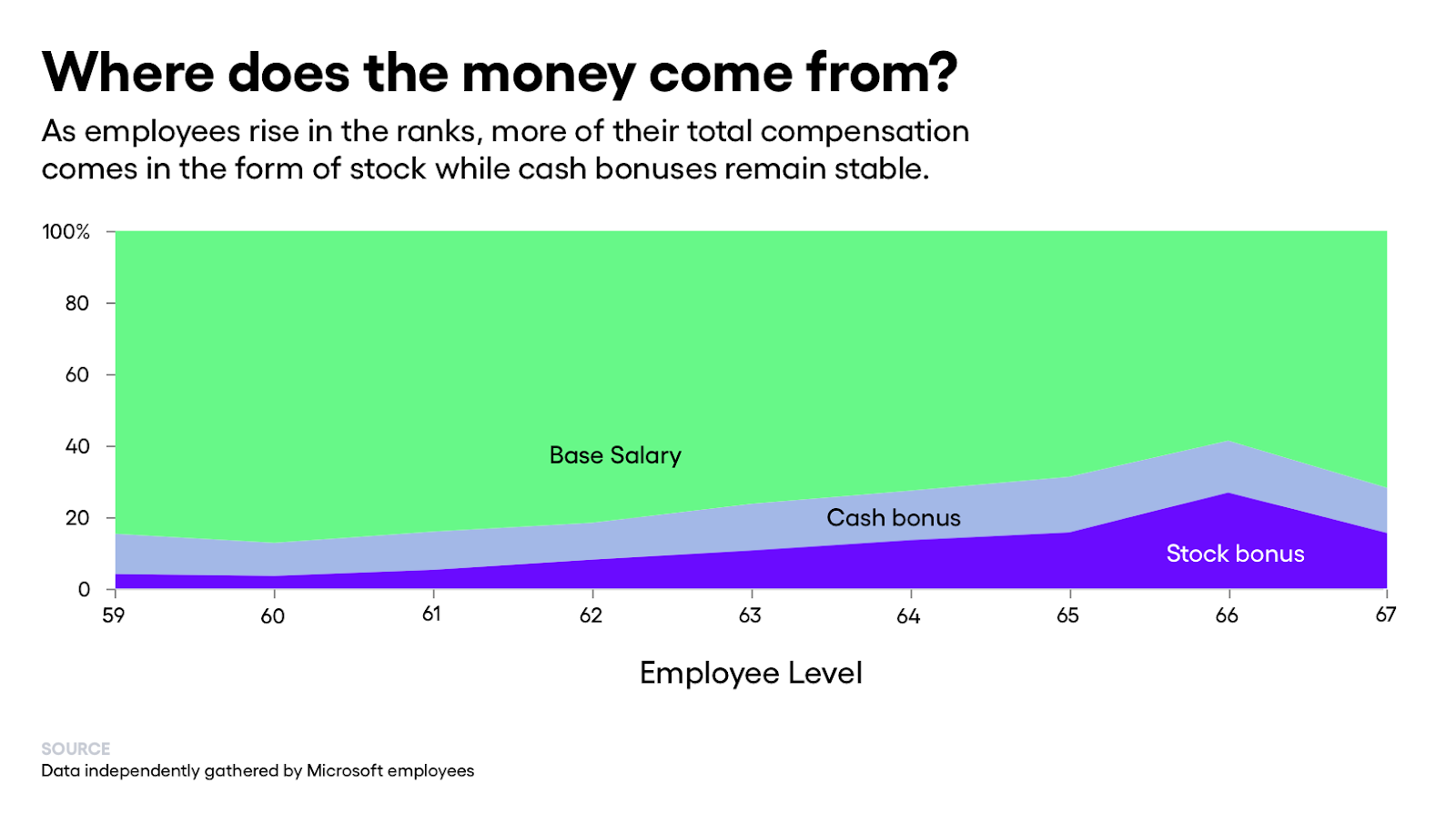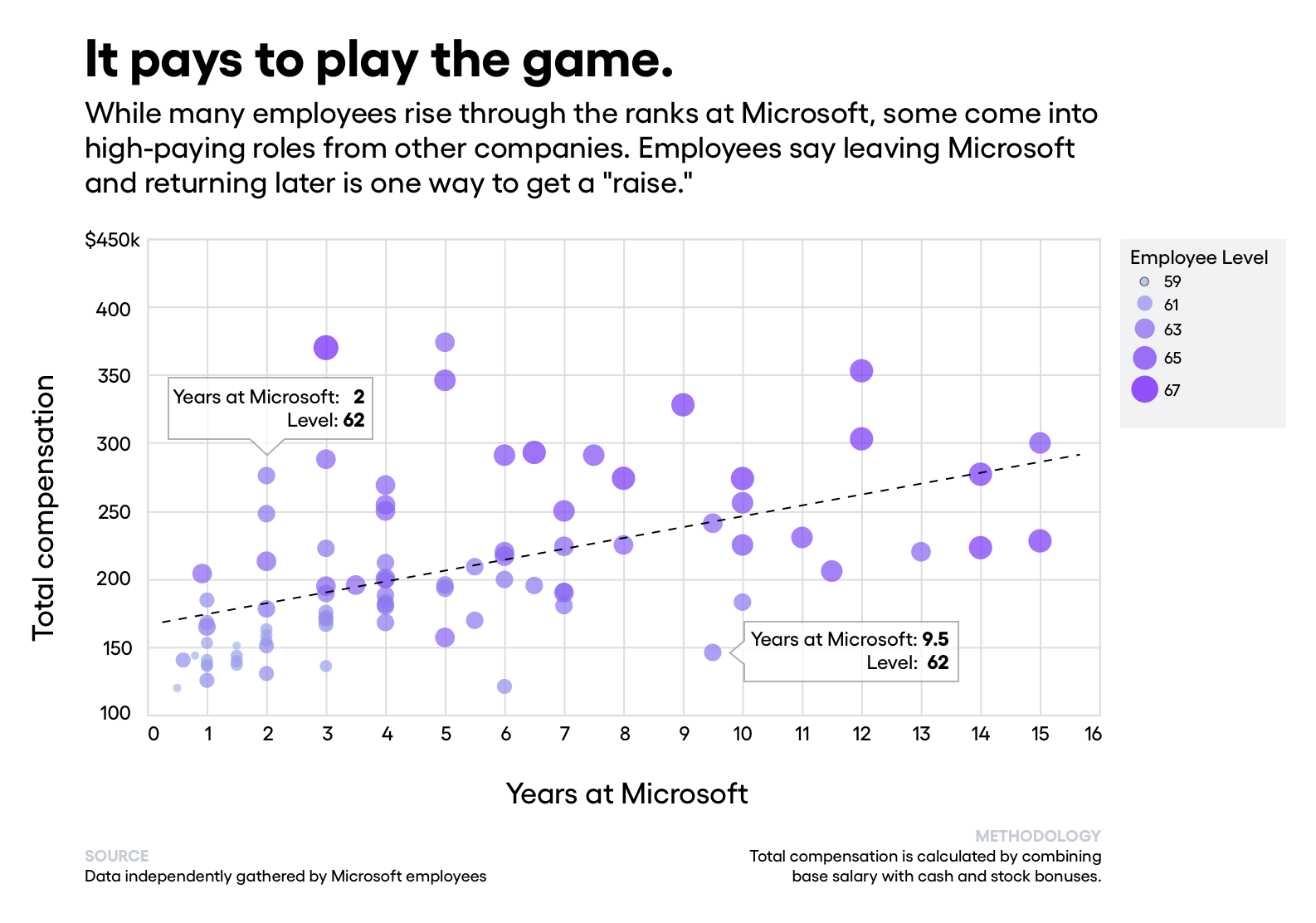Listen to this story
–:–
–:–
The numbers range from $40,000 to $320,000 and reveal key details about how pay works at big tech companies
 Photo: Stephen Brashear/Getty
Photo: Stephen Brashear/Getty

As employees progress to higher levels, more of their compensation comes in the form of stock. At Level 66, Microsoft employees reported that nearly 40% of compensation was in the form of cash and stock bonuses. While cash bonuses stay relatively stable as a percentage of salary over the course of a Microsoft employee?s career, stock compensation can rise to nearly 20% of annual income at higher levels, according to the crowdsourced data.

Employees have also told OneZero that a fairly common tactic is to leave Microsoft to work at another Seattle company like Amazon, or even a startup, to then jump to a higher level when returning to Microsoft. While the data does not track Microsoft recidivism, there is a trend of people with lower Microsoft experience having skipped into higher-level roles.

While few data points about Microsoft engineers working in India were available, the crowdsourced data revealed they are paid far less than their Washingtonian counterparts. The typical Indian coder who filled out the spreadsheet makes less than $50,000 per year, while Americans with similar experience make $150,000 per year with up to 10 times as much compensation in bonuses.
These discrepancies make it unclear whether the level system is equal across the entire company, or whether levels actually fluctuate based on location.
?Most people don?t even realize what the leveling scheme is at other companies or where they should fit, and [levels have] a huge impact on salaries,? says Zaheer Mohiuddin, co-founder of Levels.fyi, a tool sponsored by recruiting platform Triplebyte that collects salary information across the tech industry.
Levels.fyi has crowdsourced more than 13,000 tech sector salaries in the last two years to provide workers with clarity on how the different levels at each company correspond to compensation. Co-founders Zaheer Mohiuddin and Zuhayeer Musa say that they started the website after hearing about an internal Google salary-sharing spreadsheet from a friend who worked at the company.
?It was very much something we wanted to build for ourselves to help solve this compensation pay transparency issue, and we wanted to do that across companies,? says Musa. ?These internal salaries sharing threads were pretty great, but they didn?t encompass the whole industry, different companies across different levels.?
In 2015, thousands of Google employees shared salary information with each other in a spreadsheet, according to former Google engineer Erica Baker, who was involved with the creation of the spreadsheet at the time.
This form of worker organization has become more common in the last year inside modern Microsoft.
Employees say that CEO Satya Nadella has garnered goodwill and a sense of progressive culture internally, but persistent issues like sexual harassment and discrimination have caused employees to speak out and demand change in large internal forums.
A large internal email chain earlier this year escalated to Nadella ordering an overhaul of how human resource disputes related to harassment and discrimination are handled.
Microsoft employees also began an internal movement to starve the company?s political action committee from funds, with the movement?s organizers claiming that the committee?s investments did not line up with company values.
Salary sharing is a legal form of worker organization that falls in line with a desire for greater equity and transparency around discrimination and compensation issues. And there?s really no upside for individuals to upload and share their own private salary information, other than contributing to a grander vision of pay equality.
?There is a huge altruistic component,? Musa said, of why people contribute to Levels.fyi. ?I think it?s really people just seeing that there?s a need for something like this to exist.?
Matthew Conlen contributed data analysis and visualization.


